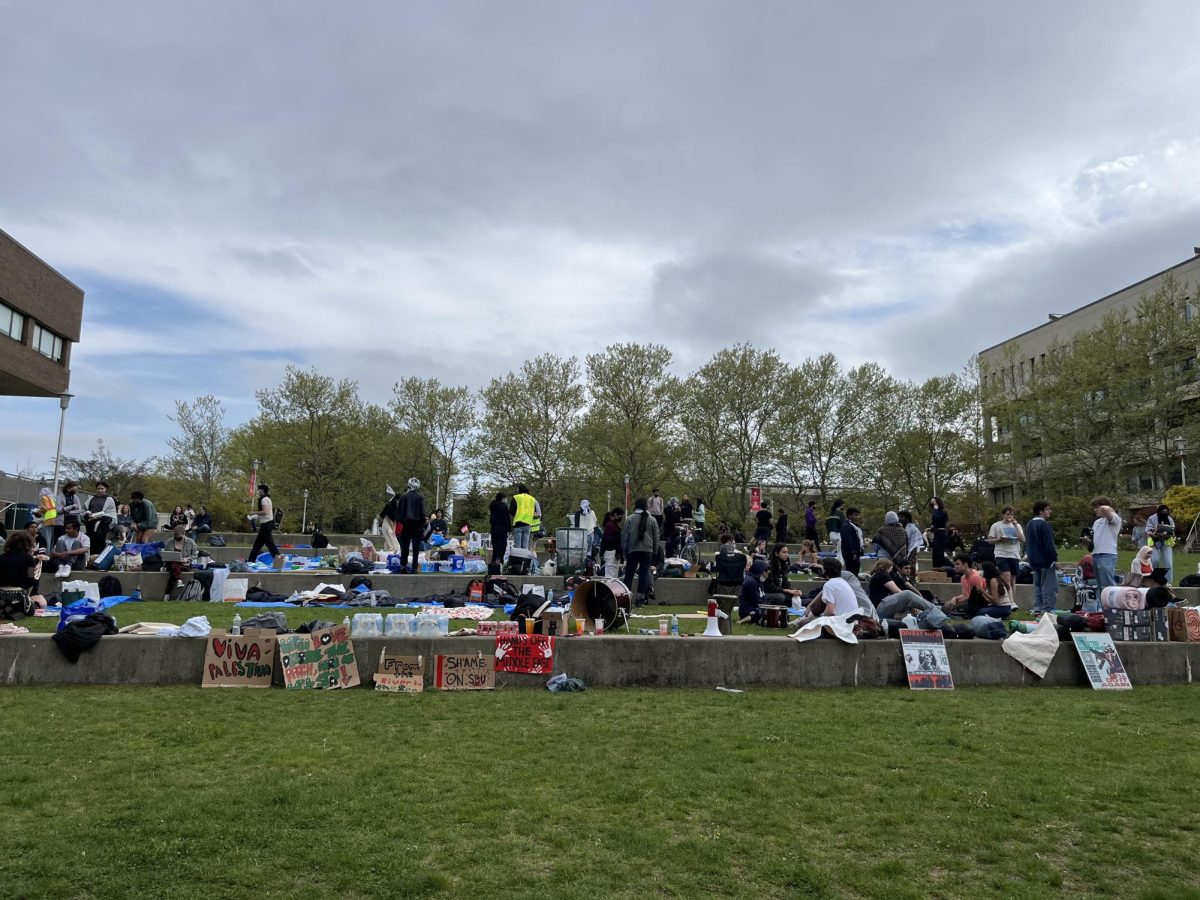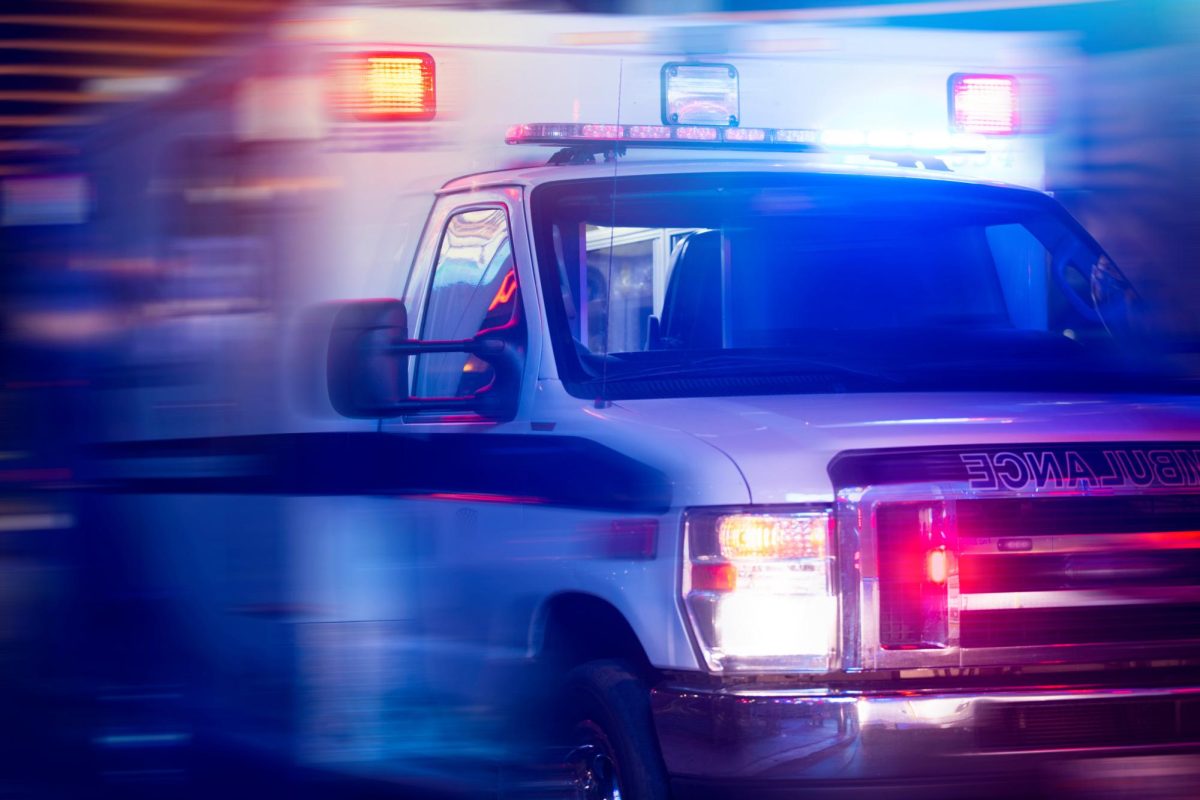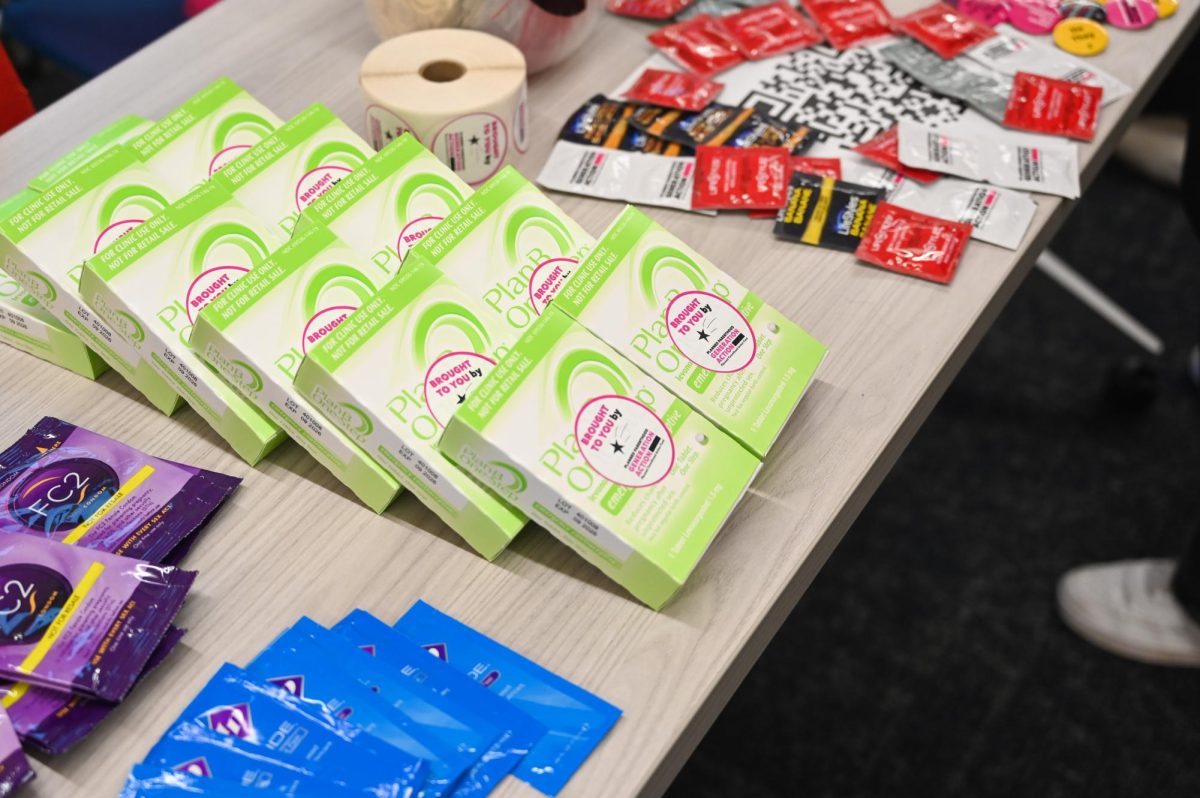Kurt Bretsch, Ph.D, is the recipient of the 2014 Provost Outstanding Lecturer Award. Bretsch is also the director of the Semester by the Sea program and is a faculty member in the School of Marine and Atmospheric Sciences.
“By 2050, Our Oceans Will Hold More Plastics than Fish.”
This shocking headline from a recent USA Today article describes the state of our oceans if we continue along our current wasteful trajectory. The short article mentions a “new plastics economy” as a potential solution, but it includes neither the background to help readers understand the necessity of, nor many details regarding steps to take for, this societal shift.
My first recognition of the ocean plastics problem occurred as an undergraduate in a marine science program aboard a tall ship, where I was eager to learn about both sailing and the mysterious marine environment. While several hundreds of miles offshore in the Atlantic Ocean, far from human populations, every few minutes we sailed past floating milk crates, gallon jugs, bags and other large, noticeable forms of plastic at the surface. Our plankton net tows not only collected a myriad of bizarre and fascinating tiny critters, but also small plastic pieces, sometimes more numerous than the plankton themselves.
While this disappointing component of the ocean was new to me, the scientists I sailed with had actually created a research program investigating the marine communities now living on the ubiquitous plastic. Later in the trip, I was further appalled by the mounds of plastic trash we climbed over on many of the beaches lining islands uninhabited by people, but positioned down-current of large population centers tens of miles away.
Today, I teach marine and environmental sciences here on Long Island. Our beaches do not have mounds of plastics, thanks in part to prevailing currents in our area, better waste management than found in the Caribbean and to the many citizens who volunteer to remove trash from our coastlines. However, we can frequently see bags, bottles and other large plastic items when we are working or recreating in our waters and along our shorelines.
Plastics enter the ocean directly from coastal communities, especially large urban centers like New York City, but it is important to recognize that activities farther inland are also a major contributor to ocean plastics. For example, from anywhere in the Hudson River Watershed, an improperly discarded plastic bag from as far north as Albany or even the Adirondack Mountains can be washed downstream to eventually end up in the oceans or on our beaches.
Plastics can take decades to hundreds of years to degrade in the marine environment. Large plastics can block the respiratory or digestive systems of marine organisms such as turtles, birds, mammals and fishes. For example, sea turtles can mistake drifting plastic bags for their natural food, jellyfish.
To understand the effects of plastics on marine life, it is important to recognize that many marine species, especially those far offshore, evolved in an environment where food has been nearly anything that floats and can be ingested. Unfortunately, the plastics we dump into the ocean fit that search image.
In the central Pacific, the deadly consequences of this misidentification are apparent in many populations of albatrosses, magnificent seabirds adapted to an open ocean existence. Adult albatrosses spend weeks searching the vast Pacific Ocean for food to take back to their chicks. Today, these islands are littered with small mounds of plastic pieces lined with feathers and bones, the remains of chicks that starved to death after being fed bottle caps, cigarette lighters, pen caps and other small pieces of plastic trash floating in the ocean.
Large ocean plastics have been brought to the public’s attention in recent years through the many news articles describing the Great Pacific Garbage Patch, which is actually two massive concentrations of floating debris (mostly plastics) found in the eastern and western Pacific Ocean.
Microplastics, as their name implies, are less observable than large plastic pieces, but their effects on marine life are more insidious. Microplastics include the remains of larger plastic objects broken down by waves and sunlight. These small pieces are easily distributed by currents and have a larger overall surface area, increasing that rate at which toxins leak out of the plastics and into the surrounding water.
Microplastics resemble plankton, tiny organisms that form the base of most food webs in the ocean, and are easily ingested by larger marine organisms. Microplastics also include microbeads, plastics that are manufactured as small particles to act as exfoliants in some health-care products. Microbeads are not removed by sewage treatment plants and have been accumulating in coastal waters.
We can easily envision the physical effects of plastics in the ocean, but less-visible chemical effects are also damaging to marine organisms. Plastics both absorb toxins, such as persistent organic pollutants, and also leach out toxins, including carcinogens. When an organism ingests plastic, it can receive a dose of these toxins. With repeated ingestion over time, these toxins can accumulate within the individual’s body. The effects can be subtle but might include reproductive or neurological disorders, delayed development or a host of other reduced functions. If a predator eats that organism, along with many other organisms which are similarly contaminated, the predator receives the toxins that have accumulated in all. When people eat top predators such as sharks, grouper or marine mammals, they can also receive high doses of the toxins.
Like nearly all human-caused environmental issues, the ocean plastics problem is solvable. Here’s some of the good news: locally, the Towns of Southampton and East Hampton have banned the use of plastic grocery bags; on the other side of the nation, California has banned the use of single use plastic grocery bags; Ireland effectively banned single use-shopping bags with a tax on their use. And, with one of the first environmental wins of this new year, the US banned microbeads. With these initiatives, we might be seeing some of the first steps that will shift our society to the “new plastics economy.”
What can you do personally to promote this shift? Reduce, reuse, recycle. You have seen this mantra before and have likely already incorporated the “3 Rs” into your lifestyle.
There is no doubt that plastics are appropriate for some products, but one-time-use plastics are usually wasteful and unnecessary. Alternatives are easily accessible: take reusable cloth bags to the grocery store; instead of drinking your water from disposable bottles, find the perfect reusable water bottle and fill it up from the tap or water fountains; substitute plant- and fiber-based containers for plastics whenever possible.
Simply put, notice where you use plastics in your everyday activities and think of ways to avoid or minimize one-time-use items. If you use disposable plastics, be sure they make it to the recycling bins and not into the trash or environment.
You should also recognize and claim ownership of your environment, including our coastal and marine regions. They belong to the public. Demand accountability and more effective stewardship from our elected representatives. Support politicians with solid environmental records as well as those who support initiatives that reduce plastic use.
Finally, continue to learn more about this issue. Equipped with facts, educate your friends and family members with reasoned discussions about both the consequences and the appropriate use of plastics. And of course, you can continue to explore solutions to this and other marine and environmental issues in the numerous courses and seminars offered here at Stony Brook.










